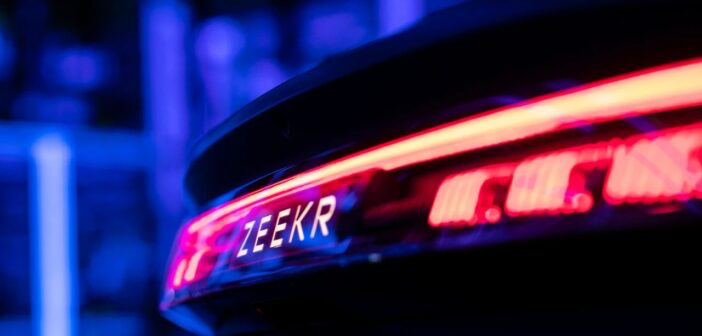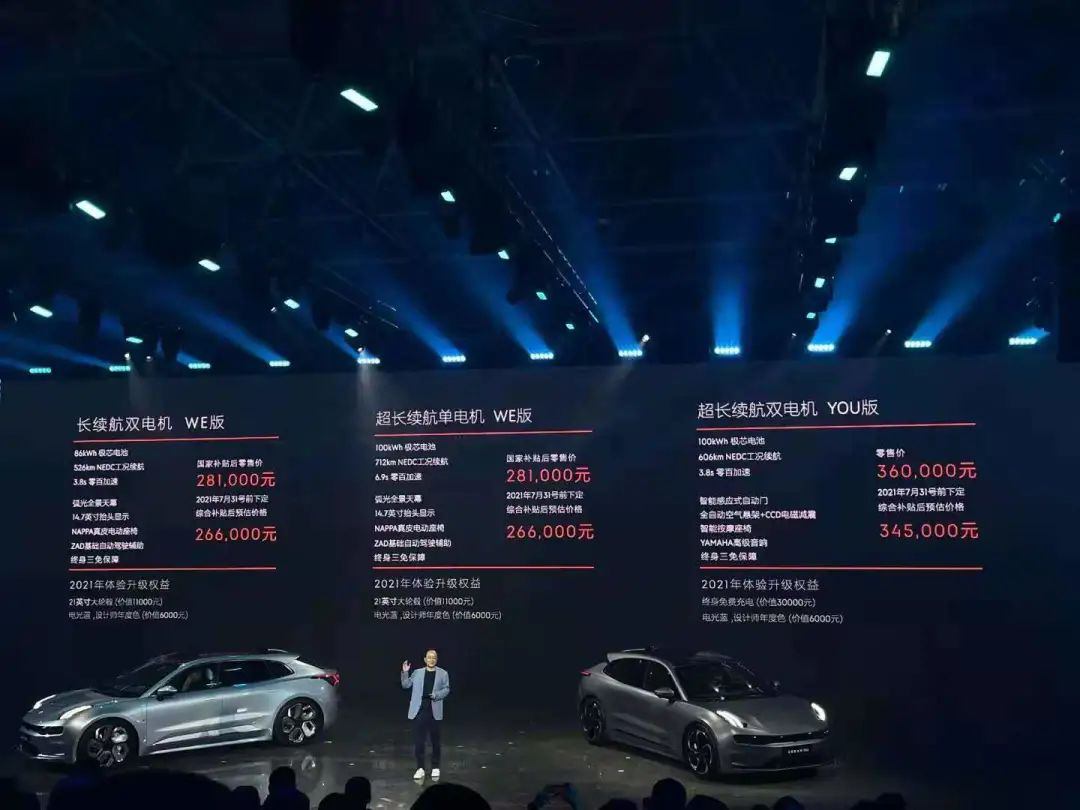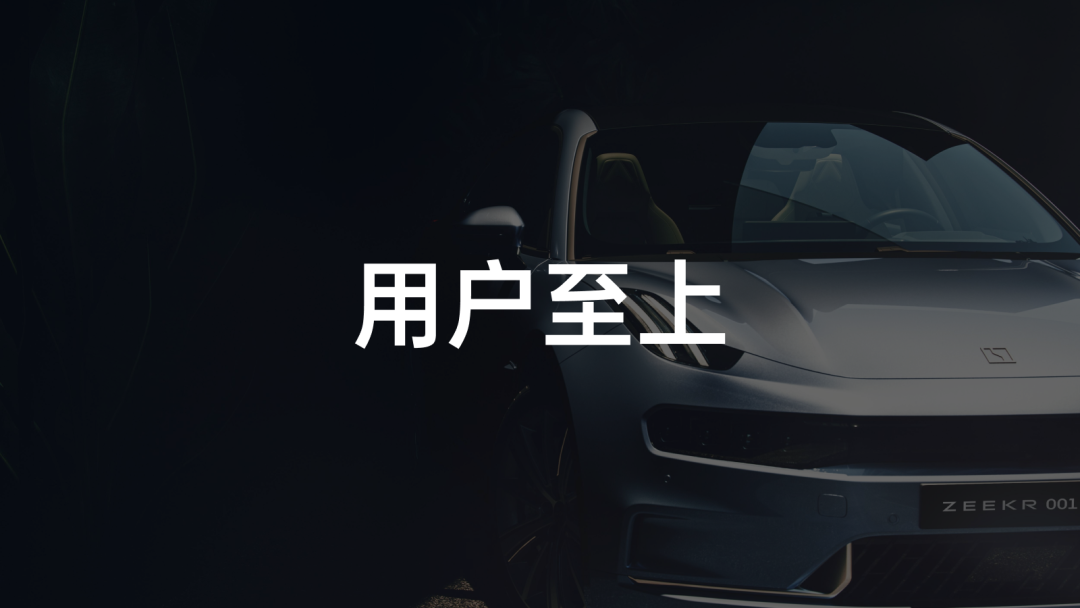“User mindset” was originally a term used in the internet industry, during the era when traffic was king, capturing user traffic was equivalent to capturing the foundation for monetization.
However, since last year, “user enterprise” has become a hot topic within the automobile industry.
And I think everyone is very clear on what caused this phenomenon, it’s because of the deep emotional connection between NIO and its users, which has brought a new mode of thinking to the industry. A more typical example is the user circle ripple model, which has been jokingly referred to as “pyramid selling” by netizens.
But I prefer to call it “viral marketing”, and it’s important to note that this is not a derogatory term. Because in marketing, this approach has a very strong influence and vitality in spreading. Once a product has formed a good reputation, it will create huge profit value.
In my opinion, thanks to the development of semiconductor, software algorithms, and 4G communication technologies, it has led to the emergence of “short and fast” small video platforms such as Douyin, Kuaishou, live streaming software, etc. which has improved the efficiency of information dissemination while reducing barriers to entry.
In addition, the saying “everyone is a media” has already taken shape in the 4G era, and will further develop in the 5G era. Therefore, I believe that the concept of user enterprise will be further emphasized from a longer-term perspective.
Because for auto companies, in this era of accelerated information dissemination, they need to consider two issues: how to do good word-of-mouth marketing for their own products, and where do they prefer their users to criticize them, Weibo, Douyin or their own APP?
At the JIQU 001 product launch, we saw that JIQU had launched a series of user-oriented car services and rights, which looked like a user enterprise model in its system framework. So how do senior executives in the company view this issue at a deeper level? After all, An Conghui also mentioned that “user enterprise is not just talk.”
Taking advantage of the Shanghai Auto Show, we attended the JIQU automotive user and media discussion, and from this discussion, we gained a clearer understanding of what JIQU is thinking.
Is it true?
I believe many people have this question, can JIQU, bred from a traditional background, really do a good job in user enterprise?But with An Conghui’s words “Today we will only talk about the shortcomings of Zeekr’s product, not the advantages,” a short sentence set the tone for the discussion that day. This also means that we, as the media, did “what we should do most” at the discussion meeting.
I have compiled some topics that the media is more concerned about, which are mainly focused on the following three aspects:
- The appearance of Zeekr 001 is more similar to Lynk & Co.
- Will Zeekr 001’s assisted driving capabilities disappoint?
- Zeekr’s brand positioning is unclear.
As for the first question, because the media’s opinions were too strong, Zeekr did not find an opportunity to respond to us, so it was overshadowed. However, this “carrot and cabbage” problem is actually easy to understand. We can find the answer from when Zeekr 001 was first called Lynk & Co ZERO.
In the past year, no one could have predicted that electric vehicle sales in March this year would account for more than 10%, and the development speed of smart electric vehicles has surpassed the imagination of many people.
Against this background, Zeekr Automobile has actually been preparing for this for the past 5 years since the development of the vast architecture. It’s just that from the establishment to the launch of the model, there was a hint of haste in the determination, and coupled with the time period of 2-3 years to develop a model, this phenomenon also becomes reasonable.
After the discussion meeting, we also went to experience the actual car. From sitting in the car, Zeekr 001 gave me the feeling that “if I forget its starting price of 281,000 yuan, then it really is a luxury brand car“, which I think is the highest evaluation I can give.
Now for the second question, the topic of whether the assisted driving technology will be “disappointing” is the most discussed. Mainly focused on the fact that Zeekr 001 does not have lidar, and the automated driving solution jointly developed with Mobileye also has not released too much information.
In response to this issue, Zeekr believes that “if they put on the lidar, they must achieve L4. But at present, neither the regulations nor the supervision are mature enough, and no one can achieve L4 on a mass-produced car. Therefore, at this stage they provide users with a high-end assisted driving product.”If we look at it from this perspective, I believe that I can accept it. Because I have always believed that the 905 nm LiDAR at the current stage is difficult to achieve fully autonomous driving. Only the 1550 nm seems to have some potential, but the current 1550 nm route still faces many challenges from “mass production”.
If Jidu Auto is to incorporate LiDAR in the future, I believe that they will adopt the 1550 nm LiDAR from Luminar without surprise. This is because Luminar’s early investor was Volvo, and Luminar has publicly stated that their first LiDAR front-loading mass production customer is Volvo. Jidu Auto’s association with Volvo is well-known and needs not be further explained.
Moreover, when Jidu Auto introduced their self-developed autonomous driving team’s scale, they specifically mentioned that Volvo now has a team of more than 600 people in Gothenburg, Sweden, who have been self-developing autonomous driving for 6 years.
In addition, they also have over 1,800 people from Yikatong and over 1,500 people from Jidu Auto’s marketplace center, so their overall self-developed team is around 4,000 people now.
Currently, this large team is jointly developing Jidu Auto’s autonomous driving, and they have already built everything from high-precision map positioning to algorithm perception fusion data in the previous two years.
More importantly, Jidu Auto believes that most of their self-development is still based on Nvidia or Mobileye’s foundation. However, they established their own chip company in 2019 and will enter the tape-out phase on May 20th. They will definitely use their self-developed chips in the future. Jidu Auto believes that, as they develop their own chips and do the entire underlying work themselves, in a sense, their opponents are players like Nvidia and Qualcomm.
In summary, Jidu Auto also stated that their goal is to achieve centralized server domain technology in 2023. This includes the reserve of chip semiconductors, operating systems, algorithms, applications, and whole-vehicle architectures to support the achievement of this goal.
Now let’s look at the problem of the third unclear brand positioning. Regarding this issue, Jidu Auto also frankly stated that “we have been more product-oriented, and there is still room for improvement in brand building“.
In my opinion, Jidu Auto currently lacks a label that leaves a deep impression in people’s minds, that is, they lack a “first” label. Just like what was mentioned in the book “Positioning,” people will only remember the first person to set foot on the American continent, Columbus, and no one will remember who the second person was.
New energy vehicle companies all have their own labels to a greater or lesser extent, and in marketing, they also focus on strengthening their own label’s memory in people’s minds. Because I believe that for Jidu Auto, they should quickly find their own “label”.Translation:
From the perspective of Zeekr 001’s high configuration and low price, perhaps everyone underestimated Zeekr’s determination to make good electric vehicles before this.
In addition, at the car show sharing session, Zeekr’s acceptance of user and media criticism and suggestions far exceeded my expectations. Have they really “seen the light”?
Where to start?
Unfortunately, I think it’s a bit arbitrary to conclude that “Zeekr has completely figured out that it wants to be a user-oriented company” based on just one media discussion. We still need to see what Zeekr was willing to sacrifice to become a user-oriented company.

Because I believe that first of all, being a user-oriented company requires three basic conditions: directly operated stores, a self-built charging system, and a good car usage experience. With these three things, the foundation for being a user-oriented company is there.
User-oriented companies must adopt the direct operation model, which cannot be bypassed. This is because, under the traditional dealership model, users belong to the dealerships’ “assets,” and manufacturers have a hard time directly contacting users, which can lead to difficulties in controlling the user experience in buying, using, and repairing cars, and may not even know what kind of people are buying their cars at the end.
If users don’t belong to the manufacturer, how can they be a user-oriented company?
As a result, it’s not surprising that Zeekr has chosen to go down the direct operation path, with plans to build more than 2 Zeekr Centers and 60 Zeekr Spaces this year. However, I don’t think this was an easy decision.
Because on the surface, it seems that Zeekr voluntarily “gave up” Geely’s more than 1,000 dealership resources. But in the process, I believe it’s not as easy as what we see.
Because first of all, as a new electric vehicle brand, and with Zeekr 001, which looks like it has “explosive” potential, Zeekr had to say “goodbye” to many years of partnership with their dealer partners, and Zeekr had to solve many complicated interpersonal relationships.
In addition to “saying goodbye to the past,” Zeekr’s decision to do so shows that they are ready to deal with the following situations.One is the situation where there are no dealers in the middle to adjust inventory. This means that the factory’s production plan in the short term has to be adjusted in real-time based on market sales. This requires higher capabilities in extremely efficient supply chain management, inventory management, and sales management.
Two is to abandon existing sales channels, invest in funds, and build their own sales channels. If coupled with R&D expenses and rebuilding the ecological system, I believe this means that JiKe has prepared to not profit in the short term.
From this perspective, JiKe seems to have some feeling of wanting to step out of its “comfort zone.”
There is also the issue of the charging infrastructure. In the past two years, we have seen countless car companies say they want to enter the electric vehicle industry, but they don’t seem to mention the construction of charging stations. Here, I will quote a sentence from Li Xiang, the founder of Ideal Motors, “They all want to be vested interests.”
Because in the present, a stable and convenient replenishment system is still the most basic service that electric vehicle users demand. If we do not attach importance to the construction of the replenishment system, then may the users and companies only have the slogan of “being moved by oneself”?
The reason behind this is also relatively easy to understand. The key is whether the decision-makers really believe in electric vehicles and are willing to invest the required effort to make it happen. Otherwise, for the actual managers of the brand, it will be a “grinding practice.”
At the JiKe media conference, we also talked about this. Their exact words were, “Now we are all-in JiKe, so we are not worried about these problems that can be solved with money.“
At the press conference, JiKe plans to establish 2,800 charging piles and 290 charging stations in 2021 and expand to 20,000 charging piles and 2,200 charging stations by 2023, including charging piles with various charging powers deployed in different scenes for users to use.
Overall, when looking at the above situation, JiKe’s ambition to become a user enterprise may not just be “talking the talk”, and at least we have seen their determination.
What is the core issue here?
——-As someone who has been driving a NIO car for more than a year, I would like to share my thoughts on user enterprise. Here, I would like to quote NIO’s CEO William Li Bin, who has mentioned on several occasions in public that “there is no threshold to doing well in user enterprise. The key is whether a car company understands it as a means of increasing sales, or as the ultimate goal of enterprise operation. At NIO, this is not a means, but a goal.”
Regarding this statement, I “partially agree”. The part I do not agree with is that there is no threshold to doing well in user enterprise. In my opinion, the threshold does exist, and it is not low. This involves several aspects, namely, product experience, service experience, and community operation.
Firstly, let’s talk about the product. User enterprise has a significant difference from the traditional model. It is because they need to create a user ecosystem that is different from the external world. This circle is relatively closed, and people inside and outside of the circle have different understandings due to the different environments in which they are in.
Buying a car has become a “ticket” to enter this circle of people, which is why their marketing department is not called the marketing department, but the “user development department”. For them, selling a car is not just about selling a car itself. Once the traditional sense of selling a car is complete, the contract between the user and the company is essentially terminated.
Meanwhile, user enterprise has turned into a “ticket sales,” where buying the ticket means the contract is executed, which is entirely different. The key here is whether the “ticket” is delicate and attractive enough. I think the NIO Model 001 is undoubtedly good enough in my opinion.

Next, let’s look at the second service capability. This is not just about after-sales maintenance, but also about offline locations such as NIO Centers. Since users who have bought “tickets” have expectations, this not only tests the manufacturer’s ability to provide services, but also tests the manufacturer’s ability to manage user expectations.
Therefore, “user satisfaction” refers to the experience that exceeds user expectations. Since service quality is closely related to cost and scale, it cannot be improved without limits. Managing the expectations of an increasingly large number of users is not an easy task in itself.
Finally, let’s talk about community operation. After building a good product and service capability, I believe that this is the core of car companies to leverage circle ripple effects.Because in my opinion, the reason why the traditional dealership model is criticized is that there is no place for customers to vent their emotions, that is, “you reason with him, he plays rogue with you, and when you play rogue with him, he says you are unreasonable.”
Therefore, I believe that creating a good owner community, if we can manage user emotions well, and the app homepage is not always” singing praises”, we have already succeeded half way, which is not easy. And the remaining social needs are additional factors for users.
Another point I think is quite critical is that the essence of operating a community is that the user values are generally convergent. So the product is actually using its price range to make user circles. This means that if the car company’s product price range is too large, these are challenges for community operations.
Conclusion
A long time ago, when I chatted with my dealership friends, our common understanding was that the essence of the dealership was to “use cash flow to earn money with unequal information,” or using an inappropriate analogy, they played the role of a “legitimate scalper.”
But with the further acceleration of information dissemination efficiency, the profit space of dealerships has been further compressed. Nevertheless, we can anticipate that expecting dealerships to do a good job in user car purchase, use and after-sales experience, the hope seems to be quite slim, and now, as we see that JiKe goes into the direct-operated model, this brings better prerequisites for user companies to succeed.
Finally, what I want to say is that, just as in the electric car market, relying only on one company will not make the market big. User companies are also the same. In the current segment runway, we need to compete with each other to grow together.
This article is a translation by ChatGPT of a Chinese report from 42HOW. If you have any questions about it, please email bd@42how.com.
